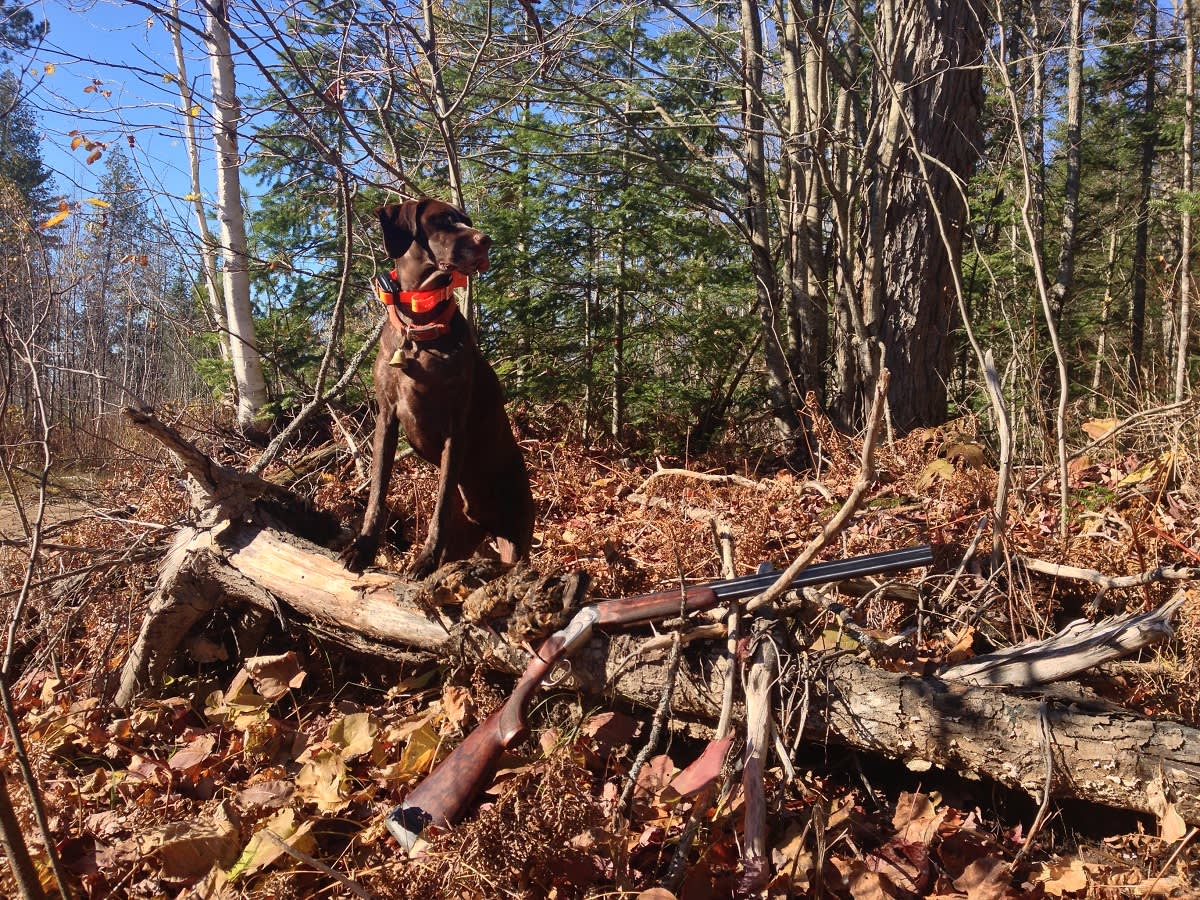Essentials for Your Bird Dog Survival Kit
Britney Starr 09.03.14

A sporting dog can be an invaluable tool in the field, and also an important part of the family. Most hunters I know are prepared to service a minor injury to themselves (or I would hope they are, at least) and carry a small first aid kit while afield, but what happens if your four-legged friend is injured during a hunt?
Below are suggestions for an upland bird dog survival kit, and other ways to help your dog, should an emergency arise.
Medical supplies
My friend Brian Koch of Ultimate Upland spends more than 100 days a year afield with his black Lab, Wyatt, and Llewellin setter, Rio. They travel the country in search of every possible upland bird. According to Brian, it’s best to be as prepared as possible when it comes to supplies.
“The most important tool I have for emergencies is my cell phone,” Brian says. “I also carry Benadryl, hemostats, a snakebite kit, self-adhesive bandages, and super glue (in case of lacerations) on my person. A basic first aid kit (for me) is in the vehicle. The dogs have their own kit as well, complete with bandages, boots, Bactine, pain meds, eye and ear wash, and some other odds and ends. Honestly, because of the remote nature of many of my hunts, and the fact I often hunt alone, in a true emergency, my best odds are to make it back to the truck and then assess from there. It’s really a learning process, bird dogs always do new and surprising things; you learn from experience and their kit seems to grow annually.”

I might not upland hunt quite as many days of the year as Brian does, but I spend an ample amount of time in Michigan’s northern wilds with my German shorthaired pointer Wesson. After Wesson obtained a serious cut to the leg a few years ago, I compiled my own bird dog survival kit, including the following items:
- Gauze pads
- Gauze rolls (be careful not to wrap too tightly)
- Waterproof medical tape
- Self-adhering wrap
- Antiseptic wash
- Benadryl (check with your veterinarian for recommended dosage)
- Clotting agent, such as Superclot
- Super glue
- Neosporin
- Saline solution, for flushing debris from eyes and ears
- Hemostats
- Scissors
- Tweezers (for tick removal)
- Sterile gloves
- Snakebite kit
- Small first aid kit (for me)
Most of the items listed above are kept in my vehicle, aside from the essentials, in an attempt to keep my hunting vest as light as possible. I always carry ample amounts of water for my dog (and myself) on my person, as well as a few cups of extra dog food. You may want to have sporting-dog specific nutrient bars on hand as well. Be sure to consult your veterinarian before making changes to your dog’s diet.
First aid knowledge
I recently purchased the Field Guide to Dog First Aid: Emergency Care for the Outdoor Dog by Randy Acker, DVM. It’s a great book for any dog owner to read, and covers the topics of first response for snake bites, gunshot wounds, poisoning, choking, lacerations, vomiting, ear problems, shock, heat stroke, broken bones, and more. Having basic first-response knowledge might save your sporting dog, should an emergency arise when you are in a remote area.

Medical records
When hunting away from home, I always make sure to carry a printed version of Wesson’s medical records and up-to-date vaccines. I will have his information on hand to give to a veterinarian who might be unfamiliar with his history. I find it comforting to pre-research local veterinarians before reaching my destination, so I know where to go—if I have to.
After the hunt is over, I always make sure to visually check Wesson for any cuts, scrapes, or lacerations. It’s important to do this every time you leave the field, even if your dog isn’t acting like there is something wrong. German shorthaired pointers, in general, have a “no quit” attitude, and won’t stop hunting for anything less than an extreme injury. Other hunting breeds are not quite as intense, but a visual check will ensure your pet’s well-being.
I hope my recommendations will inspire you to make a bird dog’s survival kit for your furry hunting partner. What are you going to put in yours?
Author’s note: In case of emergency, it is best to consult your veterinarian. The items listed above are for first response while in the field, and only supplementary to veterinary care.

